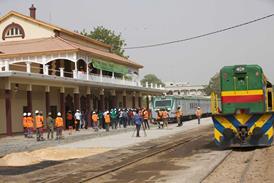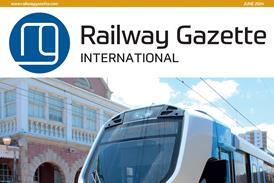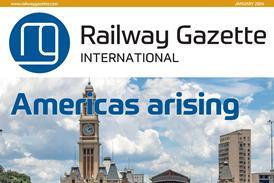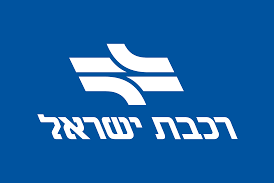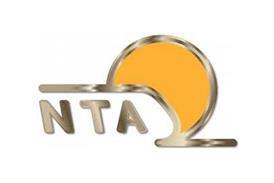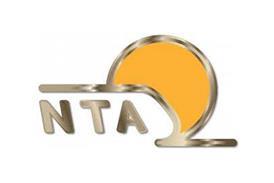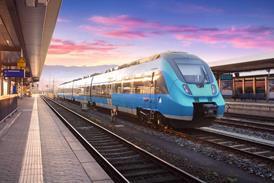Railways face a series of increasingly urgent challenges in migrating away from the obsolete GSM-R telecoms technology. As Benoît Leridon of Nokia explains, a critical aspect of this shift will be understanding the investment required to develop a telecoms backbone that is future ready for the 5G era.
‘The railways are going through a huge transition, from 2G to 5G technology. We all know this’, says Benoît Leridon, Head of the Transportation Business for Network Infrastructure at Nokia. This transition is largely represented by the shift from GSM-R technology as a bearer network to 5G under the emerging FRMCS standards.

Yet Leridon argues that simply viewing the market in terms of the migration to FRMCS and the management of GSM-R obsolescence masks a myriad of complexity in terms of this journey. For example, even within the GSM-R question, there are significant implications for railways and infrastructure managers relating to how they invest and modernise their telecoms network fixed backbone before they consider a longer term migration to 4G or 5G protocols.
‘GSM-R over MPLS has been around for 10 years or more’, Leridon explains, ‘but only a few railways we see have migrated across to it.’ Many of Nokia’s customers, he reports, have stuck with SDH technology in their backbone networks, which is starting to pose a problem in access to spare parts and finding engineers qualified to maintain it.
Meanwhile, Leridon says that even those network managers which have integrated GSM-R will still need to think about enhancing their backbone networks to incorporate ‘more density, more cell sites, which means probably a broader backbone to moving from, for example, 600 radio sites to perhaps 1 000’.
Significant change is also coming to data centre architecture, he predicts. While 2G standards could be maintained using a core hosted on physical servers, the future FRMCS capability will need to be fully functional in a cloud environment.
Leridon says these trends are not new, since they have emerged in the rest of the telecoms market over the past few years, but they are issues that rail customers will have to address over the next decade or so if the FRMCS migration is to succeed.
‘The 5G core in FRMCS will be provided as a full cloudified application, which means a lot of changes in the data centre in conjunction with provision of end-to-end dynamic communication with the backbone’, he explains. ‘This means a tighter integration between the data centre and the backbone. Today, this applies to communications service providers, and it will need to apply to rail customers too.’
Deploy your own network
Leridon believes that many of the larger railways around the world will need to deploy their own IP networks if they are to achieve the performance and reliability goals required for using 5G for rail applications such as train control, SCADA and CCTV.
There will be some functionality aspects to understand here, he adds, especially if the IP network has an optical layer. Under 5G, networks will need synchronisation to ensure hand over at fast speed, ‘and this is coming at the IP and optical layers’, Leridon says. ‘So if you’ve got an optical layer that will be the underlay of your IP network, it needs to be also providing this clocking function.’
Cybersecurity in focus
Future evolution of the telecoms backbone will place a greater focus than ever on cybersecurity, Leridon believes. This is understandable, given the aspiration of many rail operators to move to digital signalling such as ETCS, and some are keen to deploy Automatic Train Operation on top of this.
‘We can provide all the necessary security for these applications today already’, he says, but the industry expects to see a further regulatory push in this field in the years to come. ‘The network infrastructure will need to be a greater area of focus, not just the application layer. There is standardised 5G encryption to protect the core of the radio network under an FRMCS scenario, but the issue for railways is that 5G will also bring a host of other networked services which will not necessarily use the same 5G networks. These other services will need their own equivalent layer of encryption — even two years ago this was not being specified at the tendering stage, but now it is a non-negotiable.’
No slicing yet
Looking further ahead, Leridon is sceptical about how quickly rail customers will be able to exploit emerging data transfer approaches such as Dynamic Transport Slicing. In theory, this enables network capacity to be ‘sliced’ and allocated to specific data transfer applications, but this brings ‘a lot of complexity and a very high bandwidth requirement’. As a result, he says, even communications service providers are only tentatively starting to test the approach.
‘We generally see customers waiting five years after technology is being used in the service provider network before they use it on the railway’, he adds. A further complication arises from the spectrum allocation issue facing railways — ‘FRMCS will not provide a huge amount more bandwidth for railways, at least in Europe, with the currently allocated bandwidth. Therefore, this spectrum will be limited to the critical comms applications and will not benefit from slicing, because it will use the same spectrum as GSM-R.’
However, Leridon explains that rail customers already know how to manage the service level agreements for the different needs of their applications under legacy technology like GSM-R. ‘On the physical asset side, they have to essentially manage a set of routers, and you know what kind of latency value you can accept for an ATO application compared to, for example, a CCTV one.’
With 5G, there is more complexity, not least because far more vendors of the subsystems will be involved in the market. ‘The dynamic orchestration of all these applications to permit advances like slicing will be sufficiently complex, involving multiple suppliers, that it could take years to come to fruition in rail’, Leridon says.
Game over for GSM-R
Leridon believes that GSM-R will have to remain in use until at least 2035. ‘The issue now is that the telecoms backbone for railways in many major markets is still using SDH. This is a major problem’, he says, given that spares are increasingly only available on the ‘grey market’, and in any case telecoms engineers today ‘would rather work for Google than train on SDH equipment’.
As a result, railways will be faced with a number of choices about how to manage this difficult transition. ‘It’s a really hot topic for railways now’, he emphasises. Two clear strategies could be available to overcome the crunch: the first is for railways to develop a new telecoms backbone and embed GSM-R into it, creating what would in essence be a ‘pre-FRMCS’ backhaul network. The other is to adopt an interim networking architecture like OTN, which would serve as a temporary ‘bridge’. However, Leridon says that the latter option could be a risk ‘if you end up buying 1 000 OTN nodes and a few years later, you’re throwing them in the bin’.
He emphasises that the situation is becoming critical. ‘Even a couple of years ago, I think railways thought they could survive with GSM-R for another few years. Now that is no longer the case — the situation is urgent. They have to do something, because we are approaching game over for GSM-R — even if it will remain in use for perhaps another 10 years.’
Benoît Leridon is Head of the Transportation Business, Network Infrastructure, at Nokia. He was talking to Nick Kingsley, Executive Editor at Railway Gazette Group.


